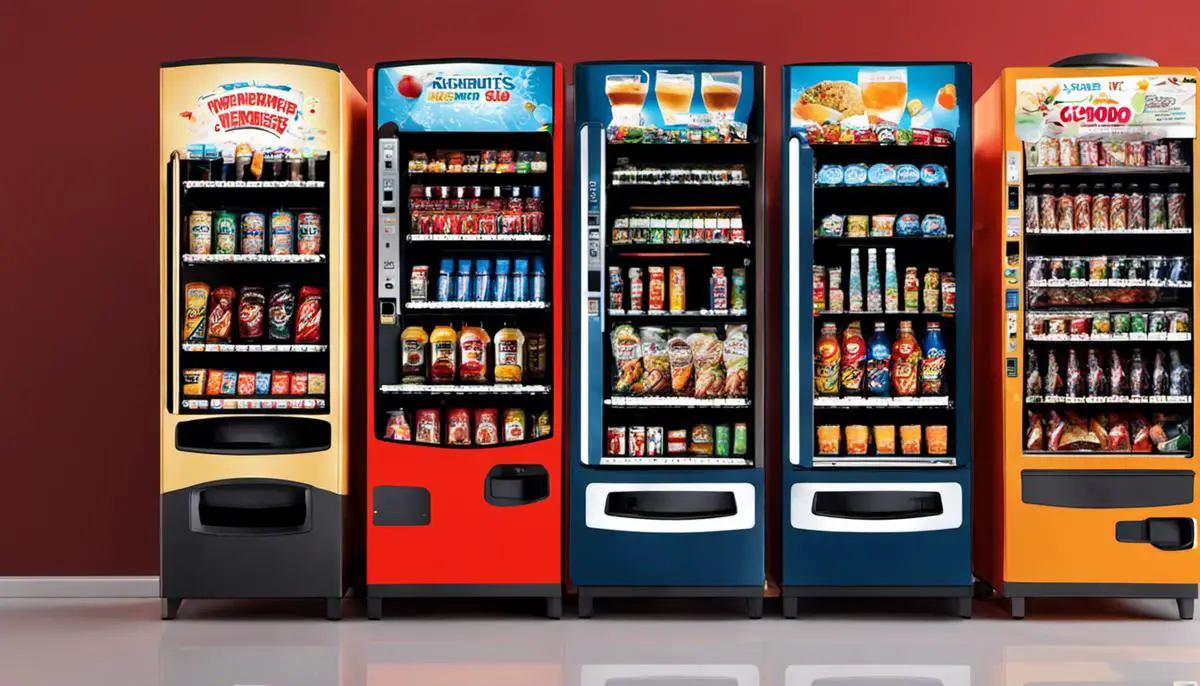As American schools evolve to meet the various needs of their students and staff, vending machines have become an increasingly common sight in their corridors. Beyond the obvious convenience these machines offer, they embody a multifaceted issue, intertwined with financial aspects, school funding, and the promotion of dietary habits. They can offer a revenue stream to supplement the school’s resources while simultaneously leading to contentious debates on health. This exploration first highlights the growing prevalence of vending machines in schools, the types of products they offer, and the practicality rendered. Subsequently, a comprehensive dissection of the financial implications, including revenue potentials and various factors affecting income is unveiled. The impacts on school funding and the controversies surrounding vending machine profits are unraveled, thereby laying the groundwork for tangible case studies of successful implementation of vending machines in an academic setting.
How Much Money Vending Machine Make In Schools
From statistics and report, vending machines makes around $3600 each year per vending machine which is not really a big amount of money. To increase the revenue gotten from vending machine, you need to increase the numbers you operates in different section of the school premises. For you to fully understand how profits are generated, we will be looking at the several items sold in vending machines and how much each one is sold coupled with average units that is sold per day.
The Prevalence of Vending Machines in Schools
Since the turn of the century, vending machines have become increasingly common in schools across the United States. This has been driven by a rising demand for convenient, on-the-go snack and beverage options for both students and staff. The types of products sold in these machines can range from processed snacks and carbonated drinks to healthier options such as bottled water, fruit juices, and protein bars.
Income Generation from Vending Machines in Schools
The average vending machine in the U.S. schools can generate revenue anywhere between a few hundred to over a thousand dollars per month, depending on the school size, student population, and the type of products sold. Studies from the National Automatic Merchandising Association (NAMA) suggest that a well-placed vending machine can generate over $100 in weekly sales. That figure could potentially rise when the machine is located in a high-traffic area such as a school.
Types of Products Sold and Profit Margins
Many vending machines in schools typically stock a variety of snacks and drinks. These generally retail for around $0.50 to $2.50 each, however, the profit margin tends to vary, typically standing at around 30-40%. Schools usually receive a percentage of this profit, ranging from 7-15%, depending on the contractual agreement between the school and vendor.
Revenue Distribution
Vendors and schools often have contractual arrangements where the total revenue generated is split between the two parties. This profit split can range from 70-30 to 50-50 depending on various factors such as maintenance costs, restocking responsibilities, and more. Because of this revenue sharing system, vending machines serve as a source of passive income for schools, which often direct the funds towards supporting educational activities or infrastructure projects.
The Effect of Health Policies on Revenue
Over the years, the implementation of health and nutrition policies has influenced the types of products sold within school vending machines, shifting towards healthier, low-sugar, and low-calorie alternatives to traditional snacks and beverages. While healthy vending machines cost more to stock, they can also result in higher average sales per student, making them an increasingly popular choice for many schools. The shift to healthy vending machine products can positively influence the profit margins, but the overall impact on revenue is still a subject of research.
Influence of School Population and Location
The income generated from vending machines is highly influenced by the school population and location, where larger schools or schools in densely populated areas typically generate more income from vending machines. Furthermore, the vending machine’s location within the school itself plays a significant role in revenue, with machines located near high-traffic areas such as cafeterias, gymnasiums, and common areas tending to generate more sales.
As an additional income source, vending machines set-up in schools can contribute financially to their operating budgets. However, just how much these vending machines generate is dependent on a variety of factors such as the number of students, machine placement, variety of items sold, and the existing health directives. The combination of these factors ultimately determines the income garnered from school vending machines.
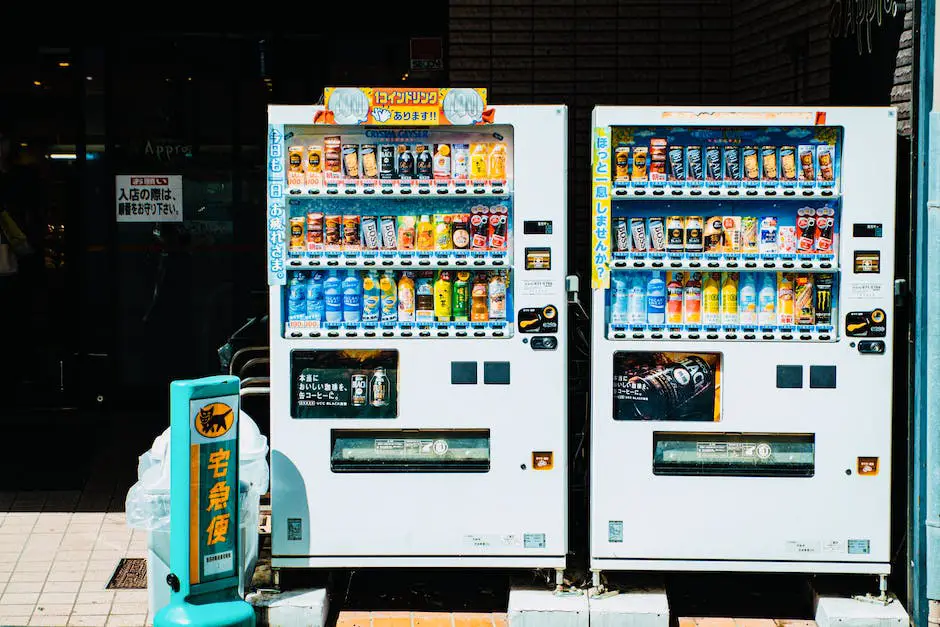
The Financial Aspects of School Vending Machines
As you seek to know how much vending machine makes in school, its also best to understand the financial impact of the vending machines in schools to better have a clarification on the important roles it have been playing for schools.
Revenue Generation from School Vending Machines
Understanding the earnings potential of vending machines in schools can be a complex matter due to the influence of many factors. As per a study conducted by Vending Market Watch in 2015, an average vending machine pulls in about $76 each week, approximating to $304 per month. This translates to an estimated annual revenue of $3,648. However, the actual earnings from a vending machine in a school can greatly diverge from this estimate, as it is largely influenced by factors such as high-traffic areas, strategic machine placement, and the popularity of products sold.
Factors Affecting Vending Machines Revenue
There are some factors affecting the business and how much vending machines makes in school, those factors which is tire down to the income it generate have been examined and broken down.
Machine Location
Firstly, the income generated by a vending machine largely depends on its location. If the machine is conveniently placed within high foot-traffic zones such as cafeterias, entryways, or sporting facilities, these machines tend to observe higher sales.
Product Selection
Secondly, the selection of items in the vending machine also impacts its earning. Traditionally, schools had vending machines full of sodas and junk food. Today, however, given the increased emphasis on health and nutrition, schools are transitioning to healthier snack options. This shift has been a mixed blessing financially. While it has opened a new market of health-conscious consumers, it sometimes results in lower sales due to high price points of healthier items.
Pricing Strategies
The pricing strategy applied to the products can directly affect the sales revenue of a vending machine. Prices should be affordable for students while still covering all costs and producing a profit.
Operational Costs and Maintenance Expenses
No discussion about profit is complete without considering costs. Operational costs associated with school vending machines include stocking and restocking the product, cleaning, and routine maintenance. Maintenance expenses include repair costs in cases of breakdowns or malfunctions. The energy consumed by the machines also forms a portion of recurrent costs. These costs can have a significant impact on the overall profitability.
Potential Profitability
Taking into account the revenues and costs associated, profitability can be estimated. Subtracting the operational costs and maintenance expenses from the total revenue provides a ballpark figure for annual profit. However, it’s important to note other factors that could impact this, such as seasonality (some machines may make a larger percentage of their income during the school year and less over holidays and summer vacation), contracts with product suppliers, and disposal of unsold perishable items.
Where profit is concerned, it’s critical to manage costs carefully and consider innovative ways to maximize income. For example, some schools opt to reduce costs by going self-operated, eliminating the need for vending operators and allowing the school to retain full sales revenue.
Long-Term Impact and Opportunities
While vending machines help schools generate extra cash, other more profound potential financial implications are worth noting. Schools can use vending revenues for supplemental educational programs, sports, and other extracurricular activities that might otherwise be out of reach. Interestingly, vending machines often double up as practical learning tools, teaching the young minds about financial management, entrepreneurship, and applied economics.
In sum, the profitability of vending machines in schools is attributed to a blend of several factors, all with the potential for increasing earnings through well-executed strategies. These machines offer a mix of utility, convenience and monetary benefits, thus positioning them as worthy assets for educational institutions to consider.
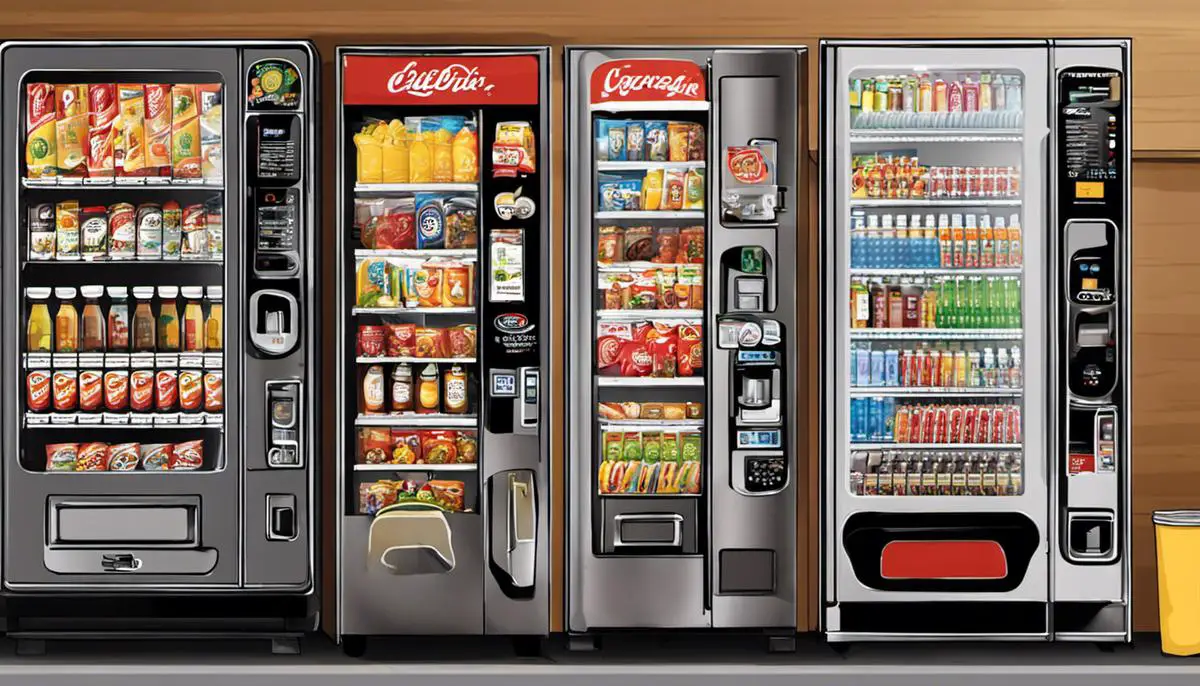
Impact on School Funding
Vending machines have very huge impact on school funding which are diversify in several ways. From resent studies, vending machine has helped in raising funds and as well and helping keep students in the school premises.
Vending Machines as a Source of School Funding
Many schools consider vending machines as an integral source of auxiliary income. The School Nutrition Association highlights that vending machines are a significant contributor to K-12 school budgets, raising additional funds that support educational programs, after-school activities, and infrastructure upgrades.
The revenue generated from vending machines addresses various financial necessities within schools. For instance, a portion of vending machine profits might be used to offset expenses related to lunch programs, to boost teachers’ salaries, or fund sports activities. At the same time, schools might allocate vending machine revenues for discretionary spending, such as staff appreciation events, student incentives, or procuring supplementary resources for classrooms.
Vending Machines Revenue
The amount of money vending machines make in schools significantly varies. Typically, schools that are larger or located in wealthier neighborhoods tend to generate more revenue. Furthermore, the type of machine and the products it sells are also key determinants of profit. A snack vending machine, for instance, might generate between $1,000 to $2,000 a year, while a pop machine might earn between $2,000 and $3,000 annually, as per VendingMarketWatch. The profit margins largely depend on what is being sold, the location of the machine, and how often it’s restocked.
Controversies Surrounding Vending Machines in Schools
Despite the potential financial benefits, vending machines in schools have not been without controversy. Arguably the most notable issue concerns the promotion of unhealthy eating habits among students. Many machines sell sugary drinks and high-calorie snacks, which contribute to the obesity epidemic facing American children.
In fact, the U.S. Department of Agriculture released new rules in 2014 requiring schools to offer healthier alternatives in their vending machines. The “Smart Snacks in School” regulation requires any food sold in schools to meet nutritional standards, which necessitate the reduction of fat, sugar, and sodium content. These measures were designed to balance the needs for personal responsibility, nutritional education, and the financial stability of schools themselves.
Navigating the Profit & Health Dynamic
The increasing push towards healthier vending options poses a significant predicament regarding revenue gains. Considering the Smart Snacks in School Guidelines, schools might witness a plummet in vending machine earnings. This drop in revenue could be attributed to the steeper pricing of healthier snacks coupled with a potential lack of popularity among students, culminating in a dip in sales.
It’s noteworthy that, while vending machines help schools raise additional funds for enriching the students’ learning experiences, they also tread the line between revenue generation and upholding nutritional standards. Regulatory challenges and health concerns pose questions that could influence their success.
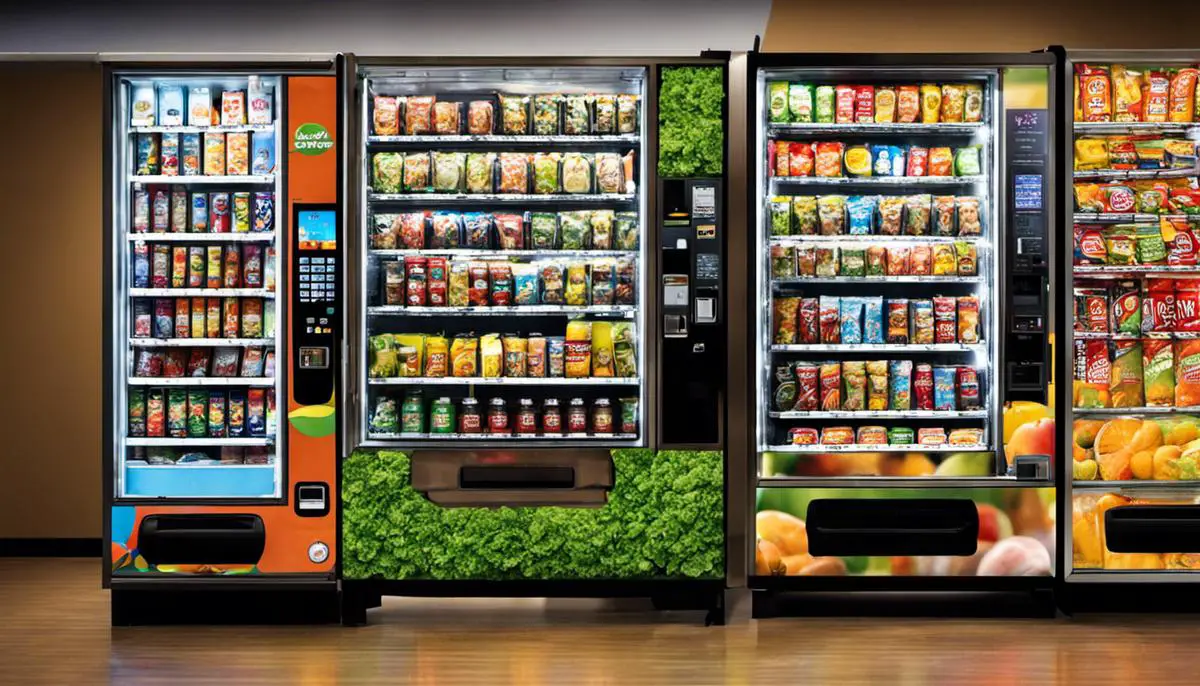
Case Studies of Vending Machines in Schools
Vending machine has really become one unique things that is found in almost every school in the United states and around the world. This calls for a case study which will help understand the operations and how to better improve its services in the school environments.
Case Study: Profitable Vending Machines in Springfield School District
The Springfield School District serves as an inspiring example of striking a balance between profit and health in running school vending machines. The district, that houses 35 vending machines across its five schools, annually garners approximately $75,000 through its vending business. The primary products in these machines are healthy snacks and beverages, priced at an average of $1.50. The achievement of this remarkable profitability can be ascribed to tactical placement of the machines, considerable student population, and a well-curated selection of products – appealing to the students’ taste while staying within the prescribed nutritional guidelines.
Case Study 2: Atlanta City Schools Vending Success
In Atlanta City Schools, vending machines’ revenue has become a significant part of their fundraising efforts for extracurricular activities. Across Atlanta’s 50 city schools, vending machines generate approximately $100,000 from beverage sales alone. By selling items at an average cost of $1.75, they’ve been able to strategically price items to generate a significant return. The success lies in the diverse selection of beverages that conform to guidelines set by the Alliance for a Healthier Generation, ensuring students have access to healthier drink options that are still appealing.
Case Study 3: Los Angeles Unified School District Vending Machine Initiative
The Los Angeles Unified School District (LAUSD) implemented a unique vending machine initiative across its schools, primarily focusing on healthier options. Profits are split between the individual schools and the district, with individual schools deciding on how to allocate their portion of the revenue for enrichment activities. In 2019, profits from these vending machines were reported to be around $200,000 for the entire district. Given the size and student population of LAUSD, the vending machines have proven to be a worthwhile investment and income source.
Case Study 4: Ithaca City School District Approach
Ithaca City School District in New York has also seen considerable success with their vending machines in the schools. Reportedly, the vending machines in their larger schools generate as much as $500 per week. This profit comes mainly from beverage sales, including water, juices, and low-calorie sports drinks. Their success is rooted in providing a variety of options catering to different dietary preferences and needs, attracting a consistent flow of student purchases.
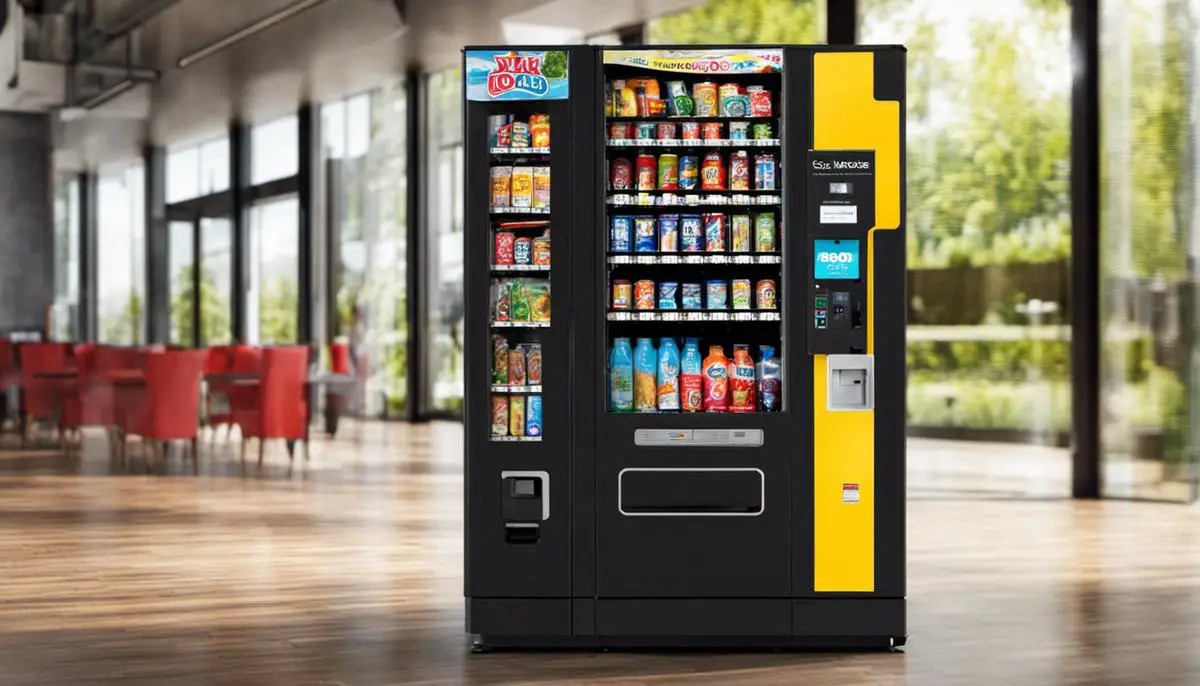
Conclusion
The actual amount that vending machines in schools make can vary widely based on several different factors. These factors include how many machines are in the school, where they are placed within the school, the pricing of the items, the options available in the machines, and the size and demographics of the student body. With clever tactics and strategies, schools like those in the Springfield School District, Atlanta City Schools, Ithaca City School District, and Los Angeles Unified School District have been able to reap substantial financial benefits from vending machine profits.
Pervading the landscape of many of our educational institutions, vending machines are no longer mere repositories for snacks and beverages. They have strategic financial value, and depending on a host of factors, can significantly contribute to the school’s funding. Despite the controversies they ellicit, when used responsibly, they can help schools manage financial constraints and extend resources. Through the lens of successful case study examples, it is evident their potential extends beyond the confines of junk food dispensers, morphing into profitable ventures that support the overall success and vibrancy of a school’s culture. Their continued rise and the subsequent debate that follows enhances the dynamic discourse of resource management in our education system. As the coin drops and the product is vended, it is evident that the conversation around vending machines in schools is far from over.

